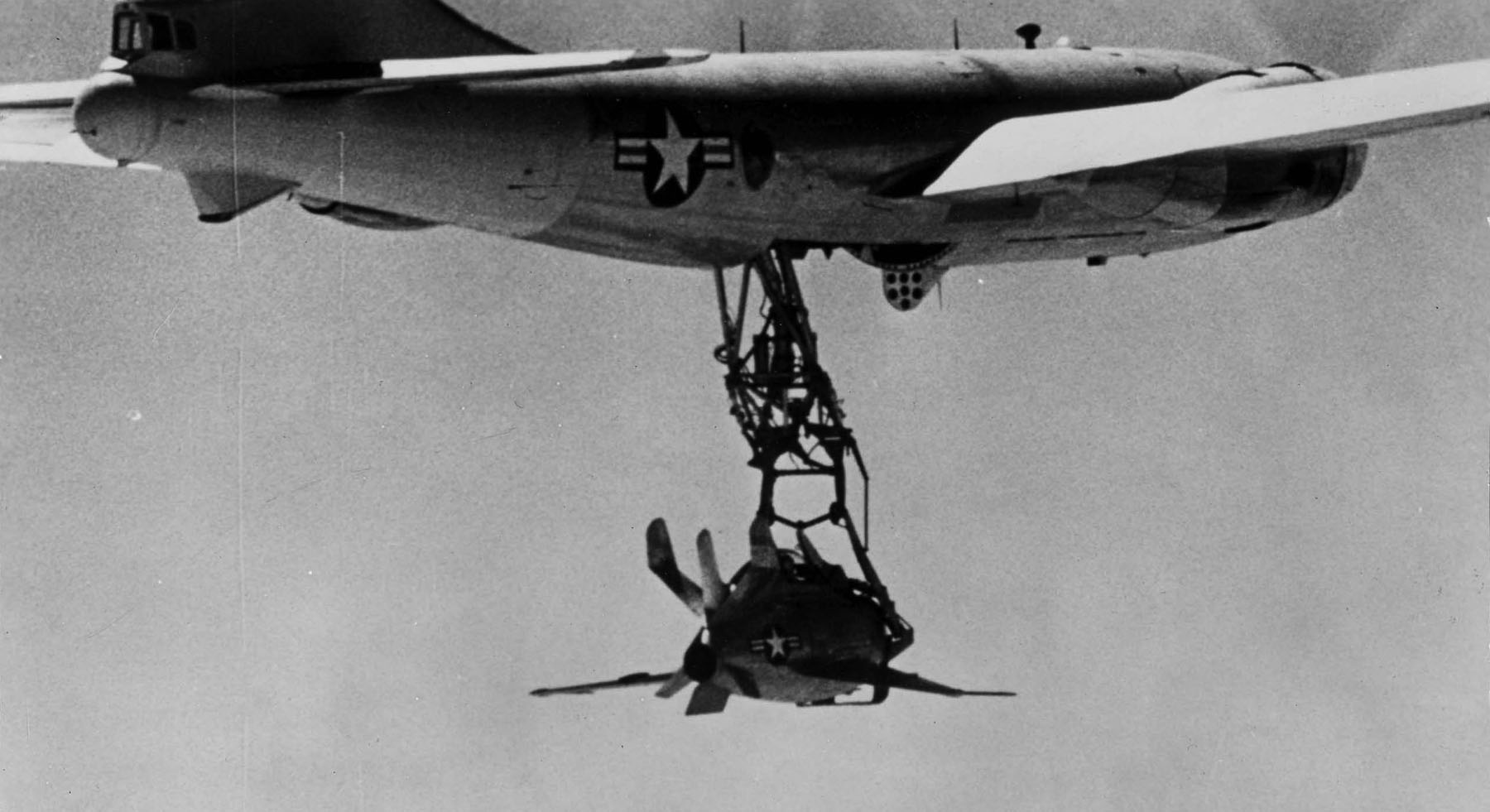
Posted on 08/01/2025 9:32:41 AM PDT by whyilovetexas111
The McDonnell XF-85 Goblin was a bizarre Cold War experiment: a tiny, egg-shaped “parasite fighter” designed to be carried inside the bomb bay of a massive B-36 bomber. The plan was to launch the Goblin mid-air to defend the bomber from interceptors and then retrieve it on a trapeze. The concept was a complete failure.
(Excerpt) Read more at nationalsecurityjournal.org ...
Yeah I think there are lessons learned for the people who are likely thinking about the same type of concept using drones

Yeah that concept goes all the way back to biplanes attached to dirigeables.
History has shown that anytime two aircraft are attempted to be connected and disconnected in flight is sketchy to say the least and is fraught with dangerous to deadly possibilities.
These days, with all the technology just in flight refueling is complex enough.
Well, they named it right at least....as far as aircraft go, that’s an ugly little spud.
I think the only remaining one is in the AF museum in Dayton, OH.
I can see where George Lucas got his inspiration for the X Wing.....................

USS Macon (ZRS-5) - Wikipedia
USS Macon (ZRS-5) was a rigid airship built and operated by the United States Navy for scouting and served as a “flying aircraft carrier”, carrying up to five single-seat Curtiss F9C Sparrowhawk parasite biplanes for scouting or two-seat Fleet N2Y-1s for training. In service for less than two years,
Went down in a storm off Big Sur.
I saw one there in the early 80’s.
The Army Air Corps tried a similar thing with bi-planes to defend the large rigid airships. That failed, too. Mostly because those airships were a technological dead-end.
I saw this in person many times at Wright Patterson AFB museum. Its stubby wings gave it virtually no dogfighting ability.
Didn’t it get dubbed as the Wobblin’ Goblin for the docking problem?
I just want to know how someone thought that it was even possible? I can remember flying small single engine airplanes and hitting turbulence from a large aircraft that flew through the area some time before and at a vastly different altitude.
Yes, during and after World War I, some Zeppelins, specifically those in the US Navy, were used experimentally as airborne aircraft carriers, carrying small fighter planes underneath on a trapeze. These aircraft, such as the Curtiss F9C-2 Sparrowhawks, could be launched and recovered by the airship, which essentially acted as a mobile base for these smaller planes.
Disclaimer: Opinions posted on Free Republic are those of the individual posters and do not necessarily represent the opinion of Free Republic or its management. All materials posted herein are protected by copyright law and the exemption for fair use of copyrighted works.